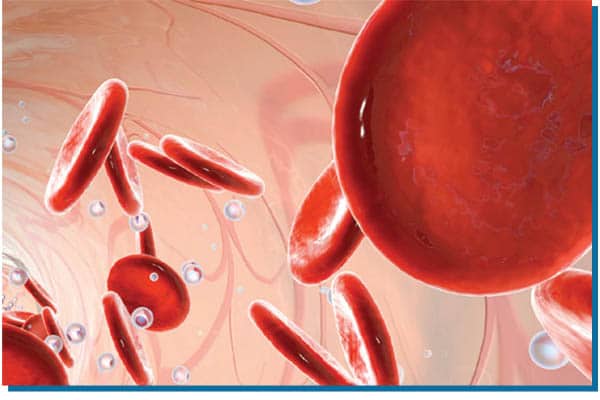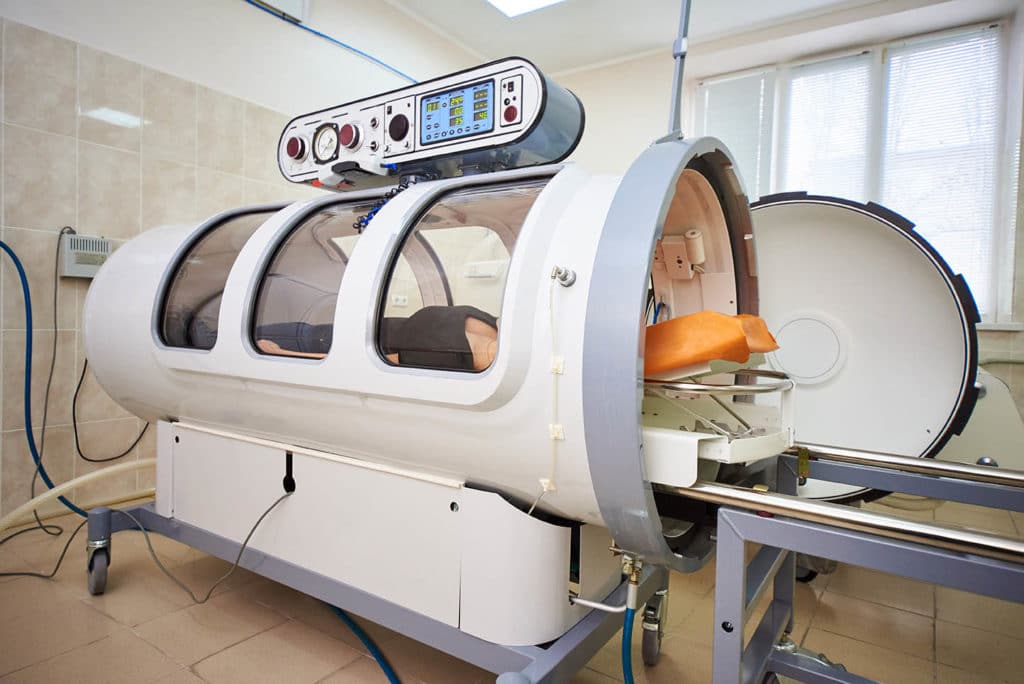Dr. Meghan Haggarty, ND, explores the impacts & benefits of Hyperbaric Oxygen Therapy in children with autism
Learn more about Dr. Haggarty →
This article first appeared in AUTISM ADVOCATE Parenting Magazine. Read the full August 2021 edition here (PDF).

Autism is a disorder characterized by multiple biochemical abnormalities with both genetic and environmental influences. Due to the complexity of autism, treatments that affect multiple underlying imbalances in the body can be effective. While standard therapies, such as applied behaviour analysis, focus on the behaviours associated with autism, other therapies treat physical characteristics commonly seen in children with autism. An example of the latter approach is hyperbaric oxygen therapy (HBOT).
What is Hyperbaric Oxygen Therapy?
Hyperbaric oxygen therapy is the administration to the patient of 100 percent oxygen under pressure. By contrast, the air we breathe outside our homes is 21 percent oxygen. The combination of pressure and 100 percent oxygen allows extra oxygen to be dissolved into the fluid around red blood cells, called plasma, and delivered to tissues throughout the body, such as the brain. Treatments typically are an hour to an hour and a half in length, five days a week for a total of 20-60 sessions. At the beginning of each treatment, pressure is slowly increased within the chamber, allowing patients to equalize their ears. Patients then receive 100 percent oxygen at the treatment pressure for 60 minutes, at which time the pressure is slowly reduced.
How does it work?

Hyperbaric oxygen works by increasing oxygen delivery to body tissues. This increased oxygen has multiple effects on different organs in the body, including the brain and the gut. Single-photon emission computerized tomography (SPECT) scans, which provide images that measure blood flow, have been used to show that patients with autism often have areas of poor oxygen delivery in parts of the brain responsible for language and social behaviour. This is known as hypoperfusion.
Oxygen delivered under pressure increases blood flow and oxygen delivery to the brain. As described by Dr. D.A. Rossignol and his team, increased oxygen delivery can help to reduce inflammation, improve mitochondrial function and decrease oxidative stress.1 Hyperbaric oxygen therapy can reduce inflammatory substances, such as TNF-a, which have been shown to be elevated in some patients with ASD.2 It has also been shown to increase levels of antioxidants, such as glutathione.3
 How does HBOT Benefit Children with Autism?
How does HBOT Benefit Children with Autism?
A study published in the Egyptian Journal of Medical Human Genetics in 2014 concluded that hyperbaric oxygen improved both autistic behaviours and brain imaging in autistic patients.4 Patients received a series of HBOT treatments at one and a half times the average atmospheric pressure at sea level with 100 percent oxygen. The study found an increase in cerebral blood flow after hyperbaric treatments. There was also a significant clinical response. Patients treated with hyperbaric oxygen therapy had a reduction in their Child Autism Rating Score (CARS), and a significant improvement in the following areas: language, socialization, cognitive awareness and behaviour.
Although each child’s response to treatment is as individual as the child’s condition itself, families typically report improvements that include increased vocabulary, improved eye contact, increased interaction with siblings and other children and an improved awareness. Hyperbaric oxygen therapy should be used in conjunction with a complete treatment program.
From Autism Advocate Parenting Magazine Inc. For information only. Views, recommendations, findings and opinions are those of the author and do not necessarily reflect the opinion of Autism Advocate Parenting Magazine Inc. or anyone otherwise involved in the magazine. The magazine and others are not responsible for any errors, inaccuracies or omissions in this content. The magazine provides no guarantees, warranties, conditions or representations, and will not be liable with respect to this content. Please read full terms here.
1. Rossignol, D.A., Bradstreet, J.J., Van Dyke, K., Schneider, C., Freedenfeld, S.H., O’Hara, N., Cave, S., Buckley, J.A., Mumper, E.A., Frye, R.E. (2012). Hyperbaric oxygen treatment in autism spectrum disorders. Medical Gas Research, 2(1 ):16.
2. Chez, M.G., Dowling, T., Patel, P.B., Khanna, P., Kominsky, M. (2007). Elevation of tumor necrosis factor-alpha in cerebrospinal fluid of autistic children. Pediatric Neurology, 36(6):361-5.
3. Ozden, T.A., Uzun, H., Bohloli, M., Toklu, A.S., Paksoy, M., Simsek, G., Durak, H., lssever, H., lpek T. (2004). The effects of hyperbaric oxygen treatment on oxidant and antioxidants levels during liver regeneration in rats. Tohoku Journal of Experimental Medicine, 203(4):253-65.
4. EI-Baz, F., Elhossiny, R.M., Azeem, Y.A., Girgis, M. (2014). Study the effect of hyperbaric oxygen therapy in Egyptian autistic children: A clinical trial. Egyptian Journal of Medical Human Genetics, 15:155-162.
